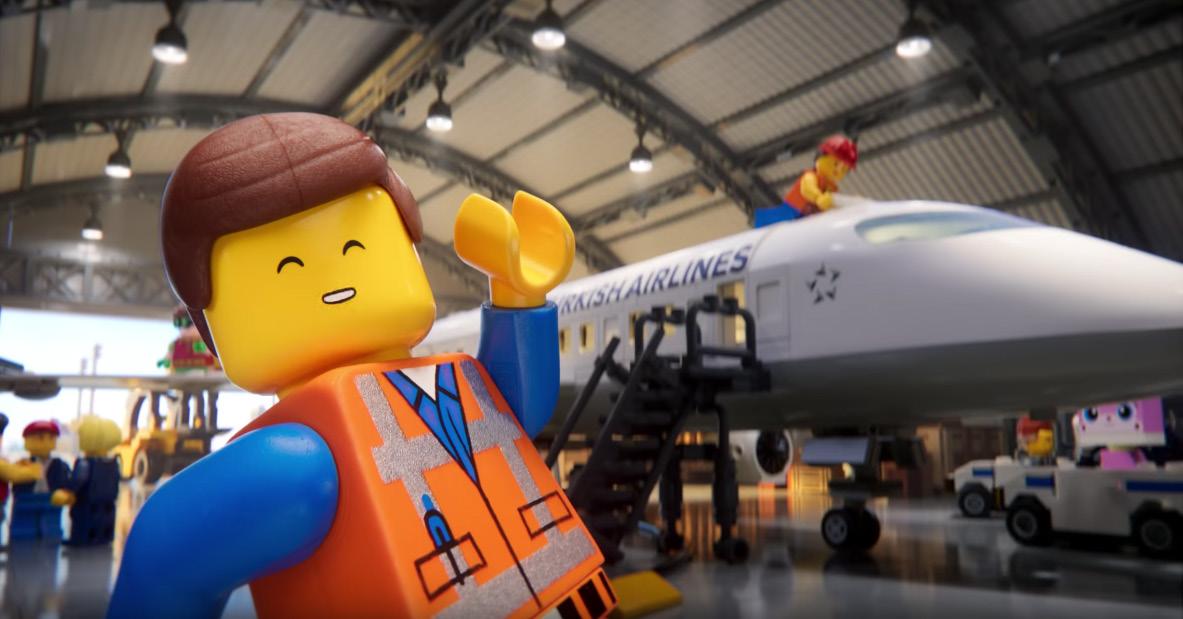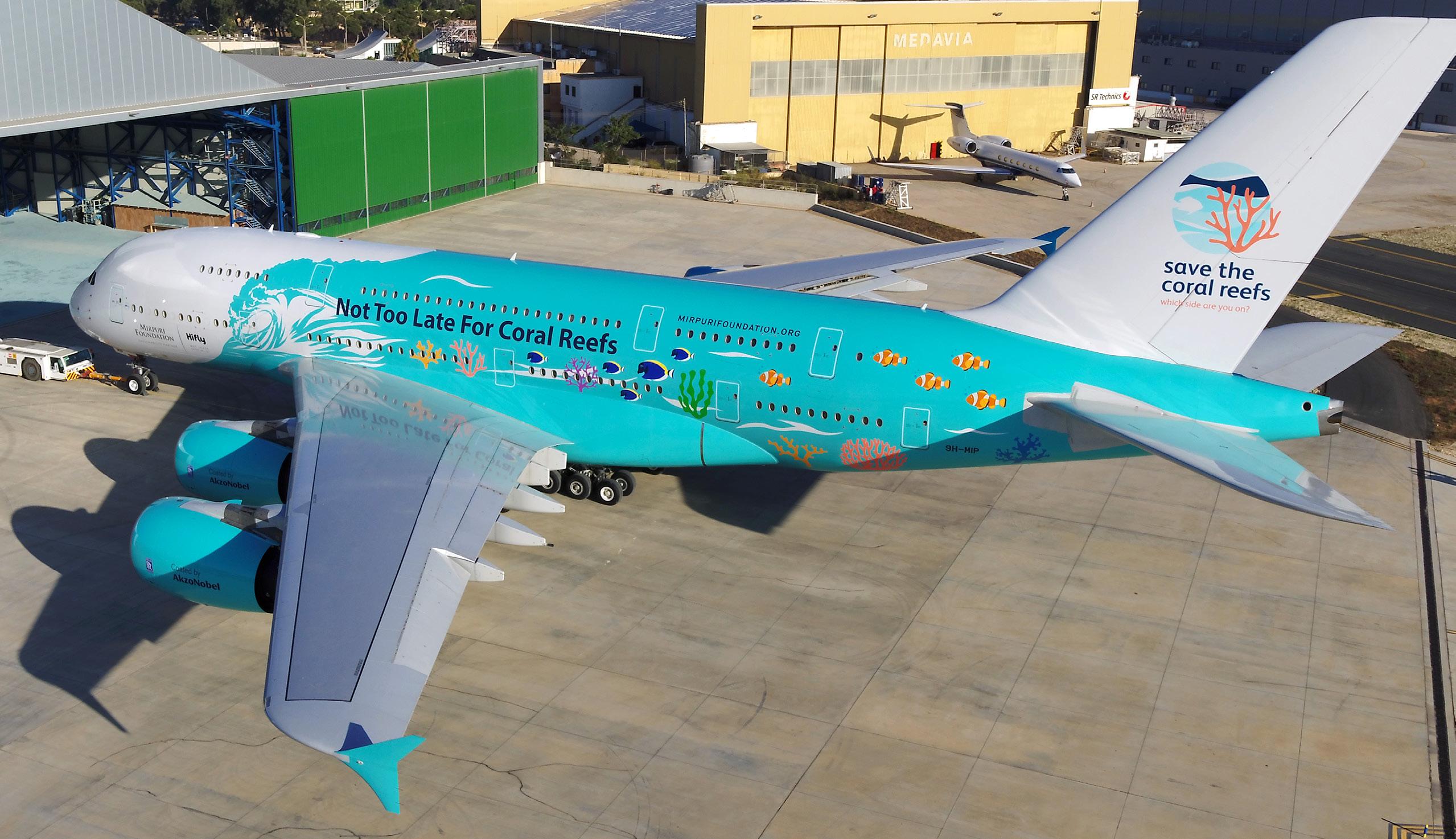
8 minute read
A LOOK AT SPECIAL AIRLINE LIVERIES
A LOOK AT SPECIAL AIRLINE LIVERIES
What are the worst special airline liveries of all times? According to the Points Guy blog, Southwest’s “Shamu” plane, Eva Air’s “Hello Kitty” jet and Austrian Airline’s ‘famous Austrians’ designs should all be on that list.
Advertisement
When reading through those examples two things become clear.
First of all, it’s very much open to taste and interpretation. Is the Eva Air ‘Hello Kitty’ jet so terrible? Plenty would beg to differ.
With tens of millions of fans worldwide, Hello Kitty is the third highest-grossing franchise of all-time with an estimated revenue over $41 billion.
Secondly, the list shows how long special liveries have been around for. For example, Southwest’s “Shamu One” first started flying 30 years ago - in 1988.
So this is certainly not a new idea, indeed it’s a tactic almost every major airline has employed at one point or another over the past few decades.
They continue to do so, because it works: Everyone passing through an airport these days has a smartphone with them. They also have time to kill.

So when they see an aircraft with an eye catching livery that stands out, the chances are that they will take a photo of it and share. Then each special livery has a number of PR opportunities attached.
For an airline it can be a good way of promoting a commercial tie-up with a film or entertainment franchise (e.g the ANA Star Wars Jets), a major sporting event (see the examples in our recent World Cup special edition) something happening in a destination (e.g. the Emirates Expo 2020 livery) or a good cause (Emirates ‘Say no to poaching’).
With new liveries being unveiled every month, we’ll talk about nine recent designs that were unveiled over the past few months.
These come from HiFly, Embraer, Hainan Airlines, Icelandair, LOT Polish Airlines, Southwest, Juneyao Airlines, China Airlines and Airbus.
HiFly - Save the Coral Reefs
This Summer Portuguese airline HiFly became the fourth European airline to fly the A380. HiFly is a full member of IATA, with an all-Airbus fleet. However as a passenger you can’t actually book HiFly flights direct.
Rather the airline is a widebody aircraft wet lease specialist, or as HiFly puts it, they are the “go to organisation for airlines when they need additional capacity.”
Recent customers h ave included Norwegian, Thomas Cook and Air New Zealand. Indeed, the first many customers will have heard of them is when they get a message prior to their flight.
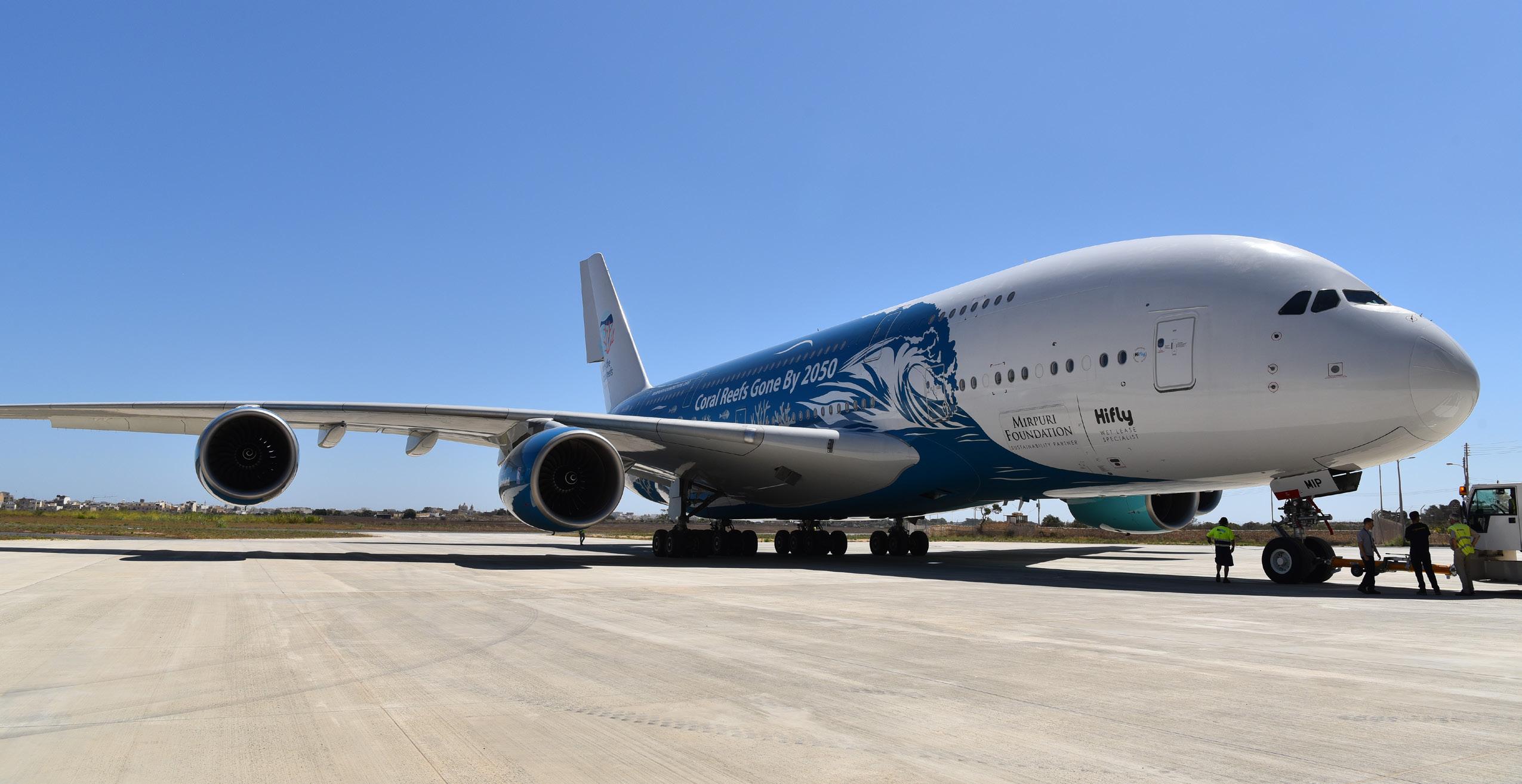
As passengers can’t proactively choose to fly on HiFly, there’s an argument to say the livery is less important, the airline could just leave its aircraft all white. Or, they could go the other way and be more creative, as arguably not being in the business of selling seats gives them more and not less scope.
That’s what HiFly did with its A380. Unveiled at the recent Farnborough Air Show, the A380 is painted in a ‘Save the Coral Reefs’ design in aid of the philanthropic initiative, the Mirpuri Foundation, whose President, Paulo Mirpuri, is also the Presid ent of HiFly.
One side of the A380 is painted in dark blue displaying destroyed corals, while the other side is light blue, which represents an ocean with colourful and healthy marine life.
Because there are no set HiFly routes, this aircraft could turn up just about anywhere. Or as HiFly says, “with this initiative, HiFly aims to amplify the campaign’s impact by reaching all corners of the earth and inspiring the change of collective behaviours.”
Embraer - Profit Hunter
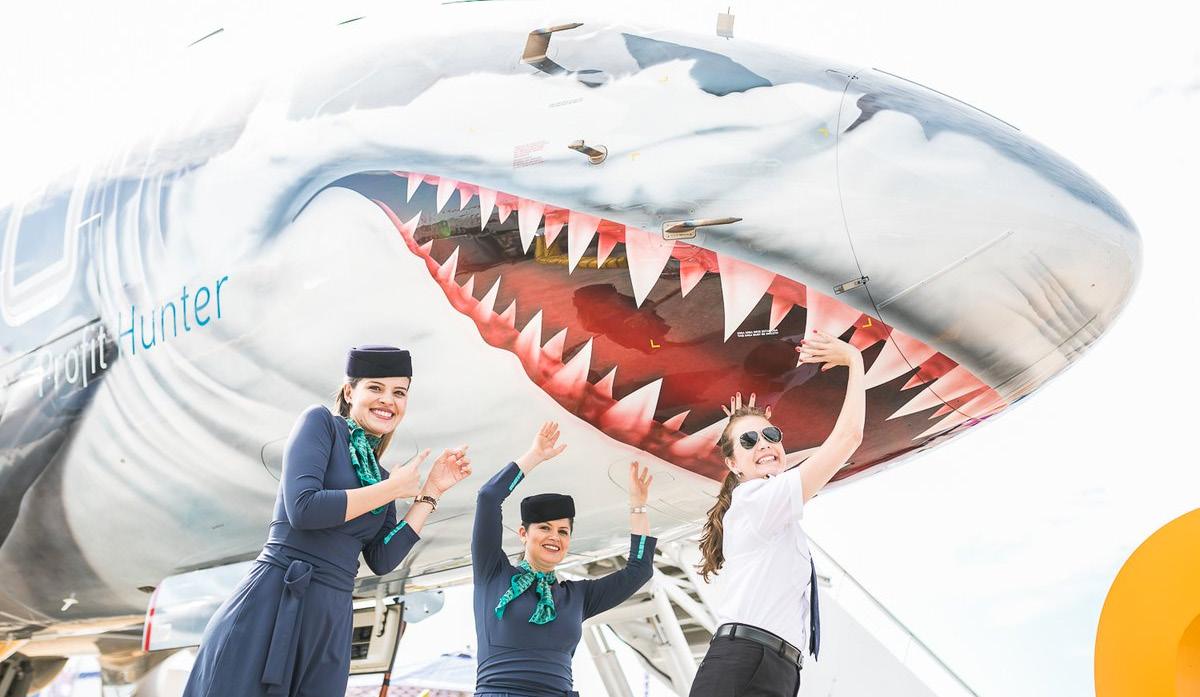
Embraer is of course an aircraft manufacturer rather than an airline, but it too used the Farnborough Air Show to show off an aircraft with a special design - the E190-E2 “Profit Hunter.”
Previous Profit Hunter designs featured a tiger and a golden eagle. This year, the aircraft had a shark theme.
Embraer says that the choice of a shark is meant to represent the fact that both aircraft and animal have highly-efficient, evolved, streamlined designs, and sophisticated sensory & navigation systems. Both can go long distances and are ideal at adapting to new environments. Before flying to Farnborough, the ‘Profit Hunter’ paid a visit to London City Airport, where 60% of departures are made by Embraer aircraft.
The use of the shark aircraft is interesting. Just like HiFly, Embraer is not a b2c brand, but it has still internalised a useful rule of thumb - everyone is ultimately a consumer.
Even if they sit behind a desk and work with sales figures, that person still thinks like a consumer. S/he has the capacity to be surprised, amazed and enthused - and will remember and react better to you if that’s the reaction you manage to elicit.
In fact, the agency that came up with the Profit Hunter campaign, Gravity London, says that is exactly what happened. For the the 2017 Paris Air Show (when the golden eagle was used), the agency claims a 42% increase in brand mentions year on year, a 300% increase in reach, and a 1304% increase in engagement. The shark design was created by Embraer employee Clodoaldo de Oliveira Quintana and implemented in just three weeks. Embraer’s impressive, heavy-weight presence at the airshow also included a daily web TV show, broadcast across the aircraft manufacturer’s social media channels.
Hainan Airlines - Kung Fu Panda
Hainan Airlines’ Kung Fu Panda livery was launched a year ago, but we mention it as the airline has recently been running a “one year on” social media campaign featuring the creator of the designs, Hannah Foss.
Hannah Foss is a young Alaska based designer, who submitted designs in an online competition along with almost 3000 others. Now, a year on, Hannah Foss is being profiled by Hainan Airlines on social media. The mechanic has been a series of Q&A themed videos, where Hannah Foss is filmed in Fairbanks, Alaska, answering questions from social media fans on her experiences.
This followed a partnership with Boeing, which delivered six Dreamliners to Hainan Airlines to be given a Kung Fu Panda makeover, and Dreamworks, the owner of the Kung Fu Panda franchise.
As a result, this livery project had a number of different elements and stages, each of which allowed Hainan Airlines to get exposure and PR coverage from it.
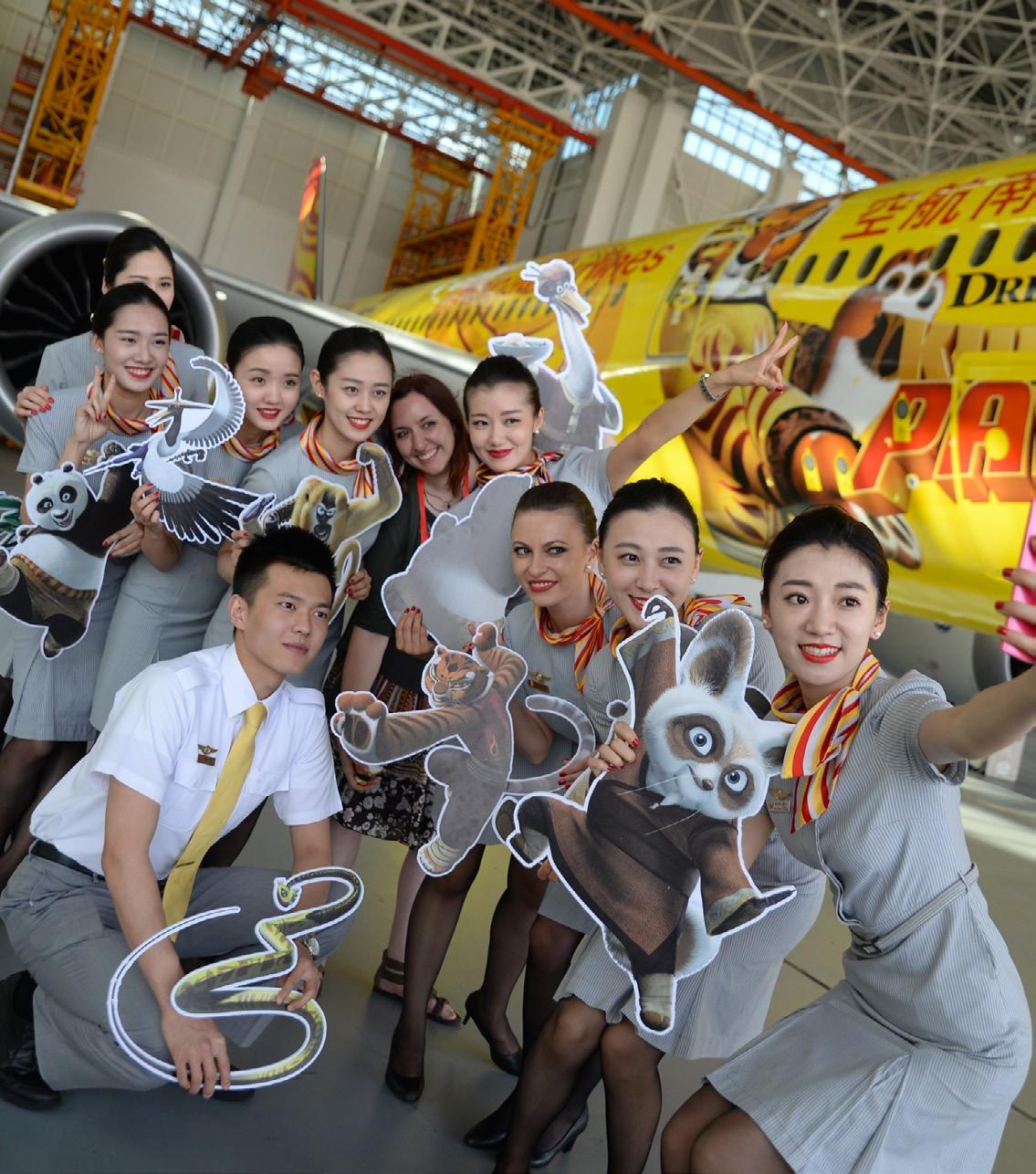
There was the initial announcement and Dreamworks / Boeing partnership, there was the competition, the process of bringing the winner’s design to life and the unveiling.
Icelandair and LOT Polish Airlines - 100 years of Independence

Both Iceland and Poland celebrate 100 years of independence this year and in both cases the national airline has created a special livery to mark the occasion.
Icelandair’s new “sovereignty” plane (the island gained sovereignty from Denmark in 1918) is a 757 designed to look like an Icelandic flag, and made its debut on a World Cup fan flight to Moscow in June.
The 757 has a bit of aviation history attached to it. As Aviation24.be explains, it used to belong to Israeli airline Arkia, and in 2002 narrowly avoided getting hit by missiles after taking off from Mombasa, Kenya.
Poland’s 100 years of independence has resulted in LOT painting both a 737-Max and a 787-9 Dreamliner in independence themed colours.
The front of the aircraft features an outline of Poland, after which red and white stripes lead to the back of the aircraft with the words “Proud of Poland’s Independence.”
The 737-Max was escorted over Polish skies by F-16s of the Polish Air Force in a special independence day celebration.
Southwest - Shark Week
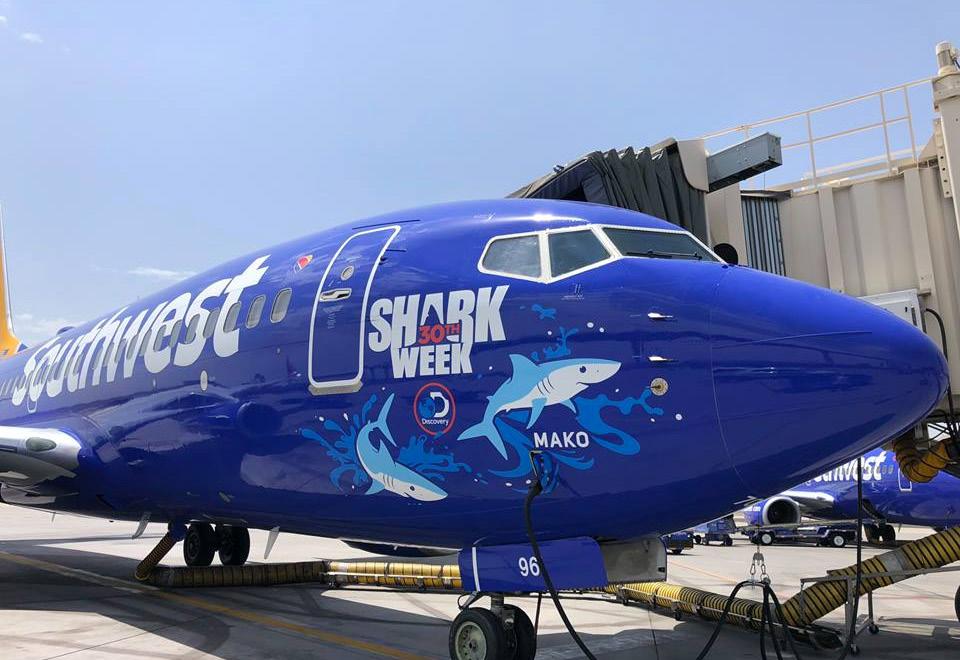
Earlier, we mentioned the 1988 Southwest “Shamu One” aircraft, which was one of the first special airline liveries.
In late July 2018, thirty years on, Southwest once again gave a number of its planes a nautical makeover.
Five 737s were painted in a shark livery to mark “Shark Week.” This is the third year that Southwest has taken part in Shark Week, in partnership with The Discovery Channel, which (as the name suggests) runs shark themed programming over the course of seven days.
However, Southwest has done more than just paint shark designs on its planes. It has teamed up with FlightAware, so that AV geeks can follow the progress of the five different Shark-inspired aircraft on FlightAware via http://swa.is/sharktracker.
At the same time, the airline ran a shark week themed sale.
Juneyao Airlines - Chinese Peony

Juneyao Airlines of China announced three special liveries prior to the delivery of its 787-9 Dreamliners from Boeing. This includes a “Chinese Peony” (flower) design, which the airline unveiled on Facebook. According to Air Transport World, the other two liveries include a red design, to mark the Chinese national flag as well as a ribbon design, symbolising China’s One Belt, One Road initiative.
China Airlines - Special A350 Livery

China Airlines is marking the introduction ofits 14th and final A350-900 by painting the aircraft in a special livery, where the rear of the aircraft incorporates Airbus branding.
According to China Airlines, “The joint livery will feature China Airlines’ blue corporate identity colors interwoven with Airbus’ classic carbon-fiber pattern at the tail of the aircraft. The combination of high-tech style together with the beauty of traditional weaving symbolizes the fusion of Eastern and Western cultures.”
China Airlines already has two A350s in service with special bird themed liveries, one features the “Urocissa Caerulea”, while the other is themed around the “Syrmaticus Mikado.”
Airbus - Beluga XL

Finally, Airbus gave its Beluga XL cargo aircraft a whale theme, as befitting its size and name.
Stuff calls the Beluga XL, “the world’s strangest looking aircraft”, and its somewhat unique look is made even more striking with the addition of smiling whale face on the front. The whale-type smile was chosen by Airbus employees in a vote that attracted almost 21,000 participants
The BelugaXL programme was launched in November 2014 to address Airbus’ transport capacity requirements. Five aircraft will be built between 2019 and 2023 to gradually replace the five BelugaST.






